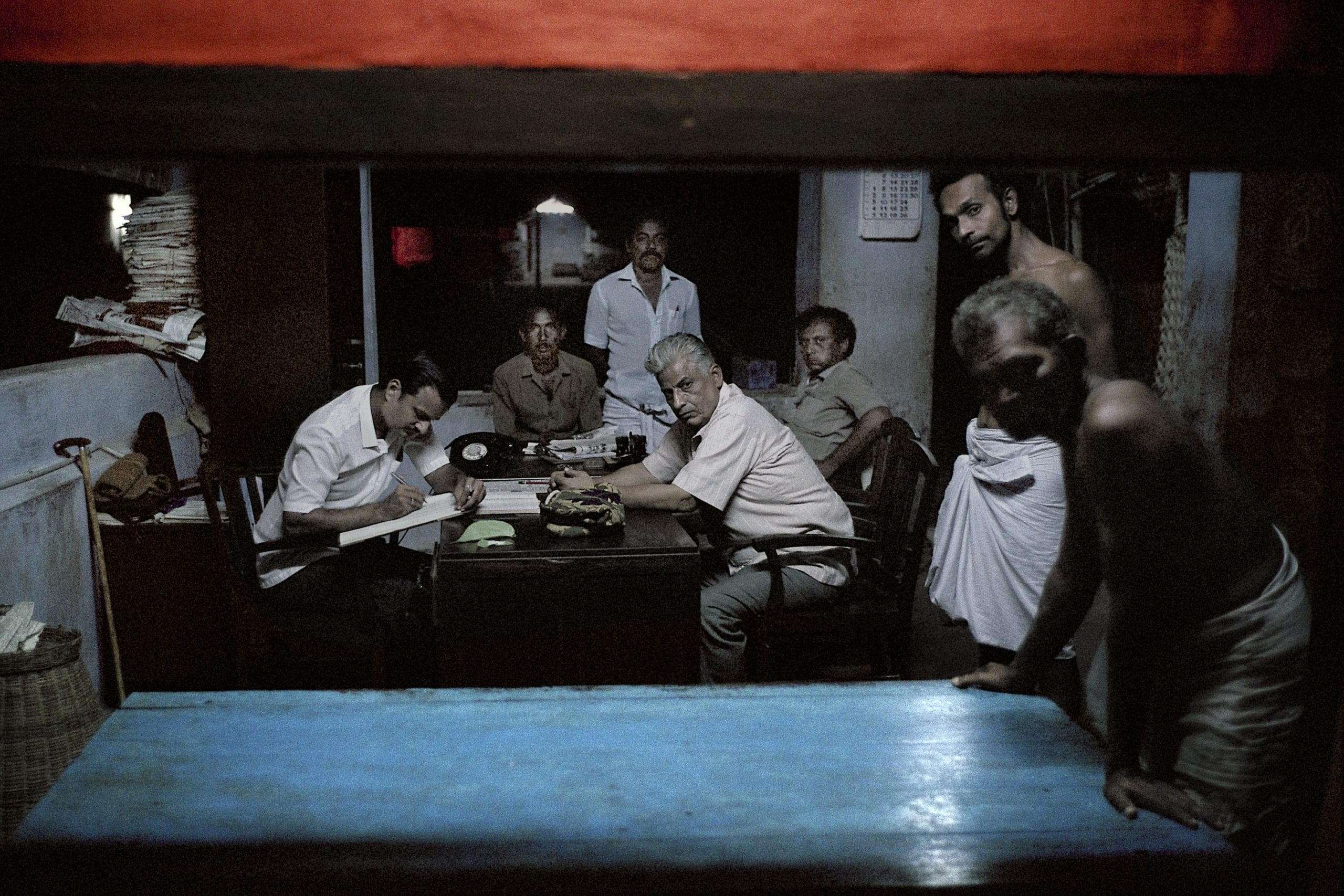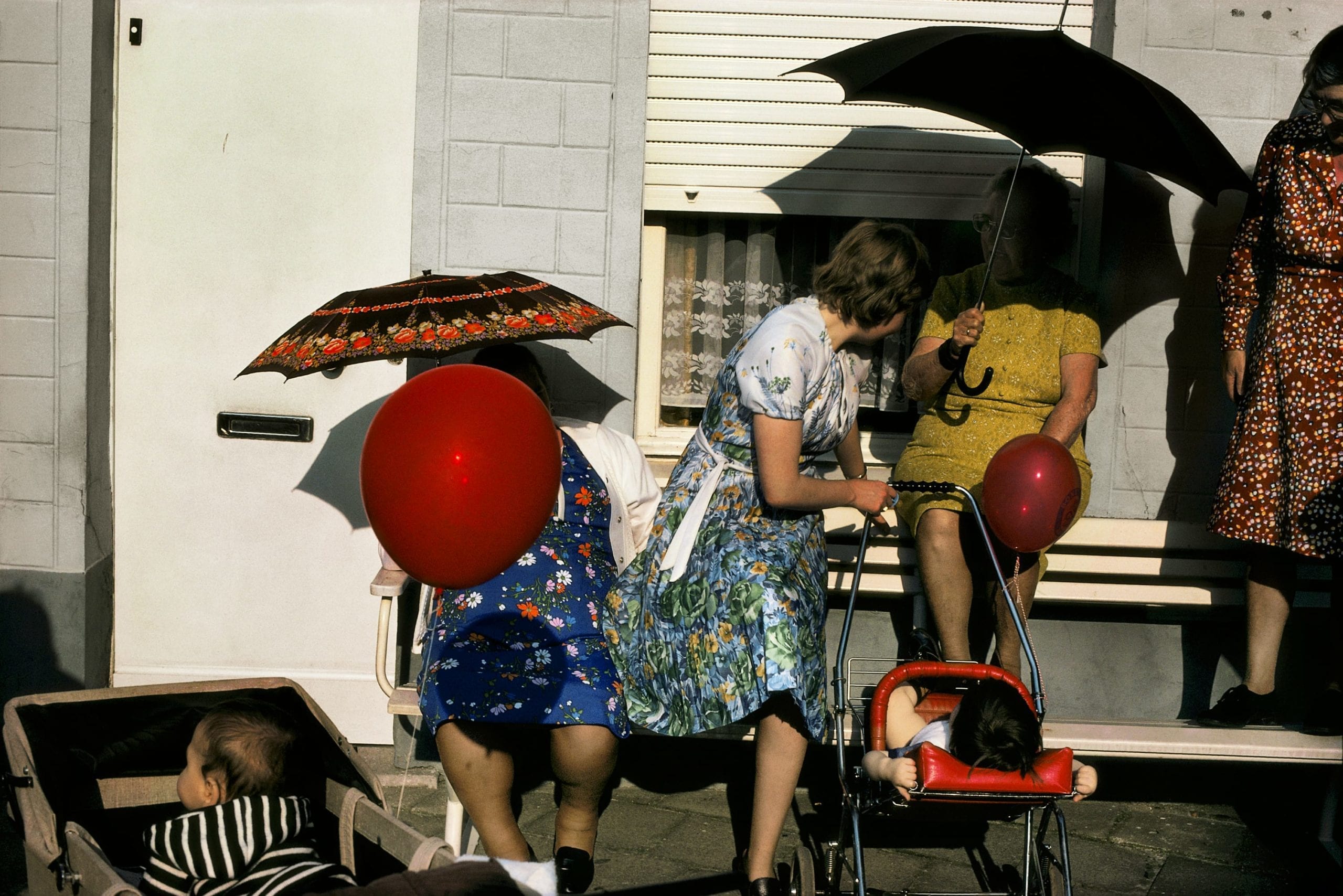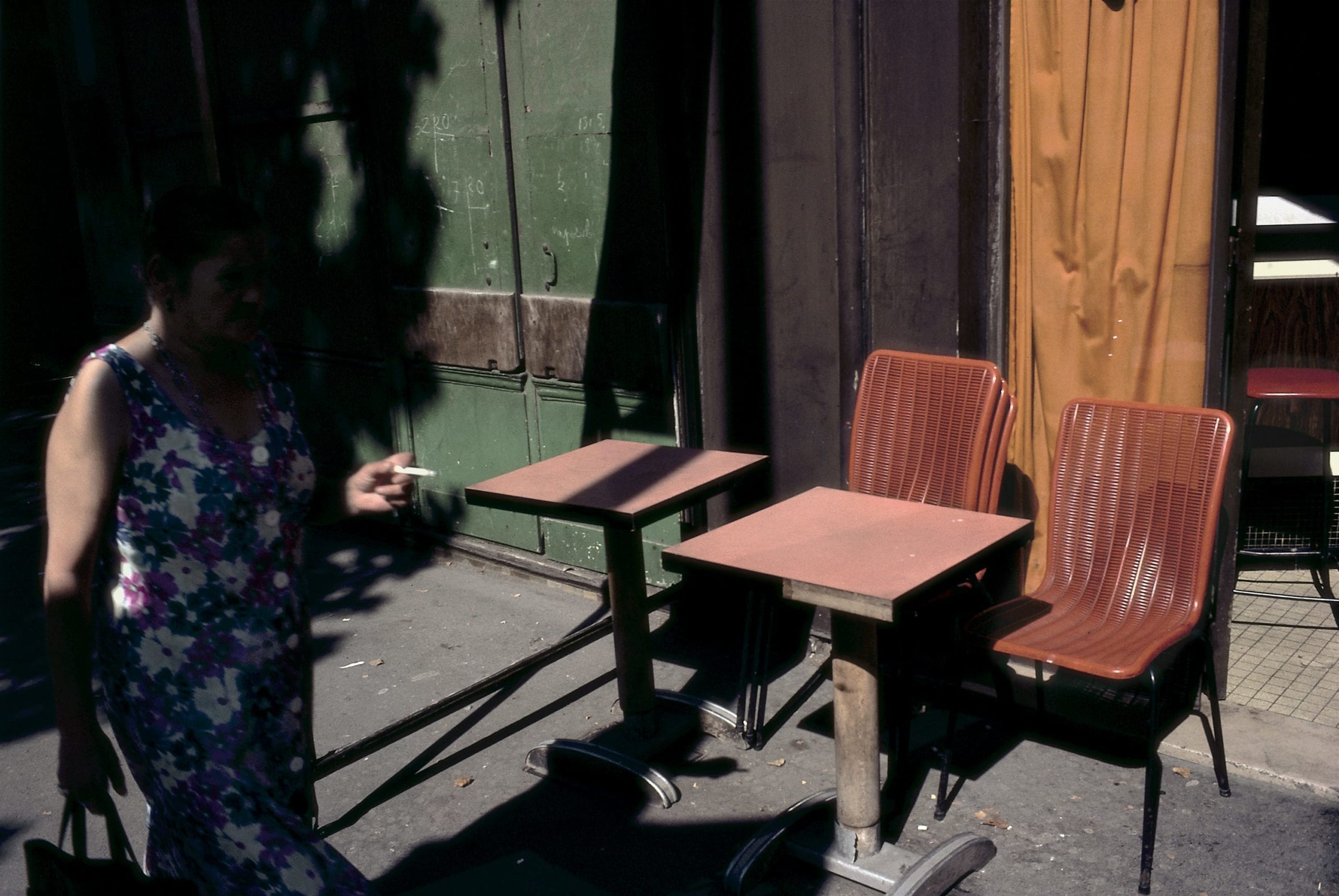Lex Van Rossen 1950-2007
It is hard to decide which to admire more, his work or the man himself. His pictures have a grace that comes from a thorough knowledge of the camera combined with a deep empathy with his subjects.
His classic live images of musicians such as Debbie Harry, The Clash, Tom Waits and many others required split timing. He had that. His portraits reflect the trust he inspired in others.
Personally, he was a true gentleman in the old-fashioned sense of the word. Softly spoken, gentle, polite, humorous with a twinkle in his eye, it was a pleasure to be in his company. I shall miss him terribly and extend my deep sympathy to his many friends and family.
Jill Furmanovsky.
Door JAN VOLLAARD 25 JULI 2015
Texecala Jones, Zoetermeer, 1986.
Met grote ogen kijkt Tina Weymouth in de lens van de fotograaf. Uitdagend heft de bassiste van Talking Heads haar bas boven een kort rokje. Het is typisch een concertfoto van Lex van Rossen: donker, contrastrijk en uitgebalanceerd van compositie, met de hals van de basgitaar in een rechte hoek met de microfoonstandaard. „Roetige plaatjes”, zoals Lex zijn krantenfoto’s relativerend noemde.
De sterren van Lex, t/m 20/9 in het Stadsarchief Amsterdam (toegang gratis). Inl: stadsarchief.amsterdam.nl
Een kleine tentoonstelling in het Stadsarchief Amsterdam laat zien wat er zo bijzonder was aan Lex van Rossen (1950-2007), popfotograaf voor NRC Handelsblad, De Telegraaf, Muziekkrant OOR en andere media. Lex kon flirten met zijn onderwerp, toen hij Whitney Houston portretteerde bij een vluchtige fotosessie in een hotelkamer. Hij kon de dynamiek van een concert in één beeld treffen, door de wapperende haren van de zanger van Soundgarden. Of hij maakte korte metten met de heroïsche pose van een popster. David Bowie kreeg vampiertandjes, Steven Tyler van Aerosmith werd door de lens van Lex van Rossen een behaagzieke clown.
Lex en ik werkten twintig jaar samen. Op een gedenkwaardige journalistieke missie maakten we tijdens een dag in september 1997 een interview en een indringend fotoportret van de zanger van Spiritualized in Brussel. Daarna reden we door naar Ponypark Slagharen voor het livedebuut van de elfjarige Jantje Smit, die triomfen vierde met zijn nummer-éénhit Ik Zing dit Lied voor Jou Alleen. Lex van Rossen, de frontsoldaat onder de popfotografen, moest dringen tussen de omaatjes en de jonge fans die het kleine zangwonder uit Volendam het zingen bijna onmogelijk maakten. Meer dan 600 kilometer reden we die dag. Lex bracht het allemaal prachtig in beeld.
In het Stadsarchief hangen niet zijn greatest hits, zoals de onsterfelijke foto die Van Rossen maakte van een knielende Bono met cowboyhoed in De Kuip, of de sexy pose waartoe hij Debbie Harry verleidde. De expositie De Sterren van Lex is gewijd aan zijn fotoarchief, dat werd nagelaten aan het Maria Austria Instituut. Daar werd de afgelopen maanden hard gewerkt aan het ordenen van eindeloos veel rolletjes film in archiefmappen. Veel van die negatieven zijn nooit door Van Rossen zelf afgedrukt. De mooiste 35 werden door archivaris Wietze Wedman geselecteerd voor de muzikantenportretten die tot eind september in de catacomben van het Stadsarchief worden getoond.
Op die foto’s zie je de jonge Red Hot Chili Peppers, de beschonken Texacala Jones van Tex and the Horseheads en de breed naar de fotograaf lachende Bobbie Rossini van Claw Boys Claw in hun volle podiumglorie. Maar ook een kleedkamerportret van Lou Reed met zijn interviewer Jip Golsteijn nog zichtbaar in de spiegel. Of hij nu Bobby Womack in alle rust portretteerde of de zinderende beweging van een concert van Michael Jackson in beeld bracht: Lex van Rossen had soul. Een harder rockende fototentoonstelling ga je deze zomer nergens zien. En nog één ding: het is er doodstil.
Een versie van dit artikel verscheen op zaterdag 25 juli 2015 in NRC Handelsblad.
Op dit artikel rust auteursrecht van NRC Media BV, respectievelijk van de oorspronkelijke auteur.
David Bowie, Paradiso Amsterdam, 1990.
Red Hot Chili Peppers, Tivoli Utrecht, 1988.









































































